Branding for E-commerce
5 Branding Essentials + Marketing Principals For E-Commerce Success
The advent of the internet has turned consumers into savvy online shoppers. Because of this greater knowledge of products, open availability of competing products, and heightened sense of urgency, brand loyalty has become harder and harder to maintain, and successful initial branding has become more important. More often than not, consumers will bypass the idea of brand loyalty if the product is a competing product is available at a lower price. As an e-commerce seller, possibly selling a private label brand, this could be detrimental to your business. A responsive and evolving brand strategy is critical in our hyper-competitive reality.
Branding is truly one of the most intricate marketing aspects. It’s mixed with emotion, expectation, and engagement. With that being said, great branding is also one of the most powerful currencies a company can have. For e-commerce sellers, building a powerful and engaging online brand is crucial. Engagement becomes a priority, because without it, brand loyalty doesn’t occur and branding efforts don’t matter. Brand strategy’s performance indicator’s cannot be put onto paper –– but when done right, branding efforts will contribute to exceeded expectations time and time again.
This process should be carefully and thoughtfully planned out. You don’t get to make a first impression (even in the cyber world) multiple times, so make the first interaction with a potential buyer count. A multi-step process, branding first involves an understanding of other key principals.
Branding and Brand Strategy
The process of branding is quantifying the value and authenticity of an organization, product, or service. It is a clear set of characteristics, benefits, and attributes that define a particular company. Often individuals use the terms branding and marketing interchangeably. While branding involves marketing, not all marketing efforts are branding.
Brand Strategy defines rules and guidelines on how, what, where, when and to whom you communicate your brand messages. A well-defined and executed brand strategy leads to a consistent brand message. Once a brand strategy is in play, a strong emotional connection with customers, and higher brand equity will follow.
Brand strategy will aid in defining how buyers view your business and product. It involves figuring out your positioning or “winning-difference.” Most importantly brand strategy is what helps you stand out from the competition and avoid having to compete on price alone. As we mentioned in Poor Product Quality Will DESTROY Your E-Commerce Brand (How to Ensure Quality) competing on price will only lead to a race to the bottom. It’s important to determine your brand strategy and positioning before branching out into any other aspects. Otherwise, you might find yourself working backwards to try and get your business to resonate with customers.
Market Research
 Company founders or executives often have a vision in place during / within the product development phase of a new product line – and will have a sense of how a certain product should be enjoyed. It could be argued that positioning and market research should be done prior to branding, however, we like to think the two go hand and hand. Once your brand strategy has been established, it’s time to do some market research. Market research is the action or activity of gathering information about consumer’s needs and preferences.
Company founders or executives often have a vision in place during / within the product development phase of a new product line – and will have a sense of how a certain product should be enjoyed. It could be argued that positioning and market research should be done prior to branding, however, we like to think the two go hand and hand. Once your brand strategy has been established, it’s time to do some market research. Market research is the action or activity of gathering information about consumer’s needs and preferences.
It’s important to try and get inside of your customer’s heads to figure out what they’re looking to purchase and why. This can be done through analysis of competing brands, or other hands on strategies. Ask questions, be open to feedback! Emailing a quick survey to your current customers, or, implementing a survey functionality within your online store are both great methods for gathering data. Additionally, broad, open-ended questions can even be posted to social media platforms. Customers appreciate knowing they have a voice.
The more you learn about your customer’s wants, needs, and preferences, the more you can do to implement change, and perfect your branding to mold the ideal customer. Appealing to a larger audience may seem beneficial in the beginning, but narrowing down a loyal, engaged segment often provides more long term e-commerce success. Know you customers, and grow with them.
The Foundation – Marketing Mix – 4 P’s of Marketing
The last bit of groundwork knowledge before we discuss branding secrets, involves a very basic, yet vital set of marketing ideas.
The 4 P’s of Marketing, also known as the Marketing Mix, are the key elements that combined, are used to capture and promote a brand or product’s unique selling points. These selling points are what’s used to differentiate a brand from its competitors. As an e-commerce seller, it’s not required that you also be a marketing professional, but basic knowledge such as this, helps.
Product: a tangible good, or an intangible service that fulfills a customer’s want or need. Regardless, it’s important that you have a clear grasp of exactly what your product is and what makes it unique before beginning brand strategy or any other form of marketing.
Price: how much your product will cost, will impact profit margins, supply, demand and marketing strategy. Similar (in concept) products and brands may need to be positioned (and branded) differently based on varying price points.
Promotion: involves the many ways marketing agencies distribute relevant product information to consumers and differentiate products or services. Promotion includes: advertising, public relations, social media marketing, email marketing etc.
Place: where buyers look to purchase products or services. Place includes the relevant distribution channels, whether that is retail or online. Also, the ideal location (physical or not) to convert potential customers into actual customers. For e-commerce, the place where buyers are engaged and converted is almost always online. Your products are online, and your marketing should be as well.
Seller Suggestions for Positive Branding:
-A recognizable logo professionally designed
-An integrated strategy that includes every relevant social media platform
-Consistent use of tone / style across platforms
Once this has all been carefully established, you’re ready to dive into the tricks of the trade when it comes to branding. If implemented, along with the information above, these branding how-to’s will lead your e-commerce venture to heights unimagined.
#1 Determine A Unique Selling Proposition
 Strategize and put into motion a plan for differentiating your brand from competitors. This means, figuring out the main reasons buyers would have an incentive to buy your product over others. Give the customer a solid rational reason to buy. A selling proposition should highlight unique goals or aspects of your business. What makes your store / product original? For an e-commerce brand this could include where your products are sourced (ethical sourcing has become important for a lot of customers) where your products are made (For example, Made In The USA, is a known stamp of approval for a lot of patriotic individuals) the craftsmanship, exclusive back story, or even the packaging. Your selling proposition will set your business and products up for immediate branding success. The selling proposition almost acts as a security blanket, and the extra nudge customers need before committing to buying. Position your brand as the obvious choice, every time.
Strategize and put into motion a plan for differentiating your brand from competitors. This means, figuring out the main reasons buyers would have an incentive to buy your product over others. Give the customer a solid rational reason to buy. A selling proposition should highlight unique goals or aspects of your business. What makes your store / product original? For an e-commerce brand this could include where your products are sourced (ethical sourcing has become important for a lot of customers) where your products are made (For example, Made In The USA, is a known stamp of approval for a lot of patriotic individuals) the craftsmanship, exclusive back story, or even the packaging. Your selling proposition will set your business and products up for immediate branding success. The selling proposition almost acts as a security blanket, and the extra nudge customers need before committing to buying. Position your brand as the obvious choice, every time.
#2 Use Product Quality to Make Your Brand Distinguishable
Again, as mentioned in-depth in the article Poor Product Quality Will DESTROY Your E-Commerce Brand (How to Ensure Quality) sturdiness and functionality can make or break your product…both literally and figuratively. Using your brand’s product quality as a marketing tool is an extremely effective way to build brand loyalty. Customers seek out to find a product that’s going to satisfy their need / want. However, whether or not that product is built to last is also a huge factor in their purchasing decision.
Nowadays, if the product you’re selling is not built or designed with quality in mind, you won’t see returning customers. Even worse, you may start to see customers express their dissatisfaction across different social media platforms. It’s common knowledge that customers are more likely to tell their friends & family when a product has disappointed them, than when they’re happy. Negative word-of-mouth marketing can spread like wildfire, and that’s not something that a small, or up and coming e-commerce business needs. In fact, it’s often hard to recover from a negative brand snafu.
However, if you keep the quality consistent, you never have to worry about these type of issues. If you’re constantly able to overdeliver on the quality of products customers will naturally recognize and begin to appreciate that.
Additionally, a study by Quick Sprout showed that when stores added a money back guarantee to their products, a 21% increase in sales was seen. Shockingly, of that increase in sales, only 12% of customers asked for their money back. These type of guarantees not only enforce your product quality, but also make the brand distinct from competitors, and nurture good will with customers.
A few good questions to answer when highlighting the quality of your brand could be:
-Where was your product made? **(Can be used in your selling proposition or included for product quality)**
-Where is the material sourced? **(Can be used in your selling proposition or included for product quality)**
-Does it meet any specific regulations? (Ex: BPA free, FDA approved)
-What material is it made out of? (Recognizable, higher quality materials will improve the overall quality persona of the product, and in turn, brand)
Putting more of an emphasis on product quality is just one small change you can choose to improve the overall brand perception of your company.
#3 Mix Up the Branding Rules
 Don’t be afraid to take calculated risks—if those risks will most likely bring well-received attention to your brand. Change it up, be controversial!
Don’t be afraid to take calculated risks—if those risks will most likely bring well-received attention to your brand. Change it up, be controversial!
If your products are quirky, try to position them that way.
A great example of thinking outside of the box was utilized with the card game Cards Against Humanity. The company has positioned themselves as the anti-consumerism company ready to take down the big guys. Their outlandish stunts, Black Friday deals, and overwhelming offensive, and sarcastic game cards have helped to secure their spot in the seemingly dying world of card games. Cards Against Humanity marches on, partly due how they positioned their brand and game initially. Their strategy was to appeal to the black sheep of the world, and to have fun doing it. The card game remains easy-to-learn, and affordable, which is no surprise why it continues to be a friendly gathering staple.
There’s no better way to individualize your branding strategy than by going places where others are afraid. Not to say every company would have had the same success Cards Against Humanity did in insulting their customers. Yet, they had a well-enough thought out strategy that the risk reaped the rewards. E-commerce brands don’t have to get lost among the many. Creativity goes a long way.
# 4 Make the Customer Experience Personal / Show Appreciation
This tip ensures you’re not only meeting customer needs but exceeding them. Make sure you’re marketing to people who match your brand identity. Handwritten notes, personal messages, engagement, and beautiful packaging all create a personalized customer experience. Remember, the devil is in the details.
For e-commerce sellers, the task of engaging with your buyers often gets overlooked, or seems too difficult to accomplish. Certain sales platforms even limit the engagement you are allowed to have with your buyers. However, there are small simple gestures guaranteed to set you apart. Nothing shows true gratitude more than a simple “thank you.” Whether that is in the form of an email, or even a card included in your packing.
No matter the magnitude of sales you have for your store, there’s always an opportunity to share your gratitude with your customers. Not only does this position your brand as being thankful and recognizing the support of your customers, but it’s also a surefire way to get a customer for life.
Brands that are able to connect with their customer base are undoubtedly more likely to keep that customer base happy in the long run. There are few more important goals than to be identified as a reliable, quality, brand who cares.
#5 Know Your Customer
This last tip ties in with the initial market research foundation we discussed. However, knowing your customer shouldn’t stop once your e-commerce business is up and running.
Always consider who your business is being built for. Remembering the wants and needs of the consumer will dictate your actions as an e-commerce seller, and set you on the path of success. All too often, brands forget their audiences and focus instead solely on the product. Unfortunately this leads to potentially missing out on valuable information that can be used to increase sales.
Take the time to truly reflect on your past buyers. Look for trends in the analytics as they can help you understand your customer and their relationship to your product and brand. Take the time to also reflect on personal experiences you’ve had with your customers. (Whether that be comments left, reviews, or email exchanges.)
Analyze data, look into patterns, and then improve. Continued branding success won’t happen if you don’t include customers in your equation.
Takeaway
Brand names are not “established” in a day. It requires a lot of strategic marketing, promotion, and overall effort. Once your basic foundation of brand strategy, market research, and the marketing mix is laid out— always consider the following tips when evaluating your branding efforts: a strong selling proposition, distinguishable product quality, straying from the pack when it comes to branding “guidelines,” a personal customer experience, and consistent knowledge of your customers.
Going the extra mile is hugely necessary for e-commerce brands to keep up. Not sure where to start on your branding journey? The earlier the better, but it’s never too late to turn your brand around! Our branding strategy experts here at Private Label Nitrous have the expertise needed to shift your company and products to a optimization state. Check out what we have to offer!

